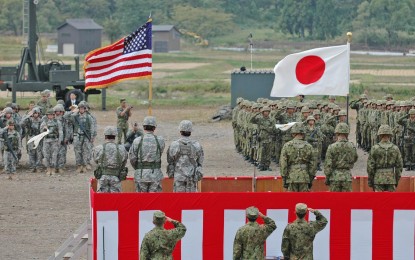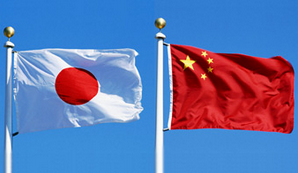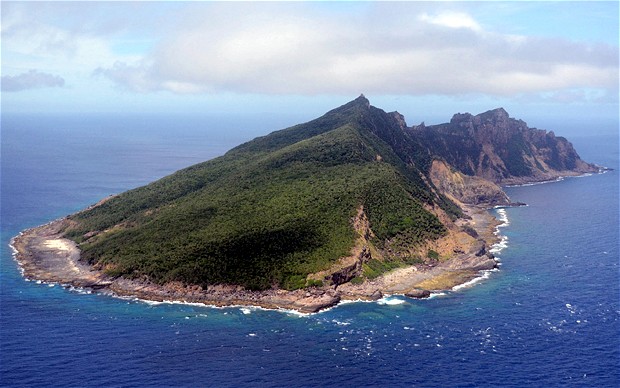Instagram is an online photo-sharing, video-sharing and social networking service that enables its users to take pictures and videos, apply digital filters to them, and share them on a variety of social networking services, such as Facebook, Twitter, Tumblr and Flickr. A distinctive feature is that it confines photos to a square shape, similar to Kodak Instamatic and Polaroid images, in contrast to the 4:3 aspect ratio typically used by mobile device cameras. Users are also able to record and share short videos lasting for up to 15 seconds.
Twitter is an online social networking and microblogging service that enables users to send and read short 140-character text messages, called “tweets”. Registered users can read and post tweets, but unregistered users can only read them. Users access Twitter through the website interface, SMS, or mobile device app.
Twitter was created in March 2006 by Jack Dorsey, Evan Williams, Biz Stone and Noah Glass and by July 2006, the site was launched.
Tumblr
Tumblr is a microblogging platform and social networking website founded by David Karp and owned by Yahoo! Inc. The service allows users to post multimedia and other content to a short-form blog. Users can follow other users’ blogs, as well as make their blogs private. Much of the website’s features are accessed from the “dashboard” interface, where the option to post content and posts of followed blogs appear.
Pinterest is a visual discovery tool that people use to collect ideas for their different projects and interests. People create and share collections (called “boards”) of visual bookmarks (called “Pins”) that they use to do things like plan trips and projects, organize events or save articles and recipes. The site was founded by Ben Silbermann, Paul Sciarra and Evan Sharp. It is managed by Cold Brew Labs and funded by a small group of entrepreneurs and investors.
Facebook is an online social networking service. Its name comes from a colloquialism for the directory given to students at some American universities. Facebook was founded on February 4, 2004 by Mark Zuckerberg with his college roommates and fellow Harvard University students Eduardo Saverin, Andrew McCollum, Dustin Moskovitz and Chris Hughes. The founders had initially limited the website’s membership to Harvard students, but later expanded it to colleges in the Boston area, the Ivy League, and Stanford University. It gradually added support for students at various other universities before it opened to high-school students, and eventually to anyone aged 13 and over. Facebook now allows anyone who claims to be at least 13 years old to become a registered user of the website.
Google Plus+
Google Plus is a social networking and identity service that is owned and operated by Google Inc. Google has described Google+ as a “social layer” that enhances many of its online properties, and that it is not simply a social networking website, but also an authorship tool that associates web-content directly with its owner/author

Japan is divided over making changes to pacifist constitution
(Photo Credit: Japan Daily Press)
(BGF) – On Sunday, May 4, 2014 The Boston Globe picked up a story from the Associated Press discussing the debate in Japan about revising the Japanese constitution. Current Japanese Prime Minister Shinzo Abe has been pushing to revise Japan’s pacifist constitution, which renounces the country’s right to wage war and to maintain an army, navy, and air force. The U.S., which helped to draft Japan’s constitution following the conclusion of World War II, supported Japanese efforts to relax the ban on Japan’s ability to maintain a military during the Cold War as the U.S. sought allies in Asia. The U.S. support for efforts to relax the ban continue today, as the U.S. wants Japan to bear a greater burden of its defense. However, public opinion in Japan is largely mixed on the topic of reinterpreting and revising the Japanese constitution. Click here to read the full article or visit The Boston Globe or Associated Press website.
Japan is divided over making changes to pacifist constitution
By Mari Yamaguchi ASSOCIATED PRESS
TOKYO— Japan marked the 67th anniversary of its postwar constitution Saturday with growing debate over whether to revise the war-renouncing charter in line with Prime Minister Shinzo Abe’s push for an expanded role for the military.
The ruling conservative party has long advocated revision but has been unable to sway public opinion. Now Abe is proposing that the government reinterpret the constitution to give the military more prominence without having to win public approval for revisions.
His push, backed by the United States which wants Japan to bear a greater burden of its own defense, has upset the liberals who see it as undermining the constitution and democratic processes.
Hundreds of people gathered at a Tokyo rally commemorating Constitution Day, a national holiday.
Japan’s pacifist charter is at stake, organizer Ken Takada said: ‘‘We citizens must stand up, take action, and raise our voice to stop Abe, or this country could return to a Japan that wages war with Asia as it has done before.’’
Written under US direction after World War II, the 1947 constitution says the Japanese people ‘‘forever renounce war as a sovereign right of the nation’’ and that ‘‘land, sea, and air forces, as well as other war potential, will never be maintained.’’
That ban has been relaxed over the years, with US encouragement as the Cold War unfolded and America sought allies in Asia, allowing Japan to have a military to defend itself, dubbed a Self-Defense Force.
The ruling Liberal-Democratic Party has long denounced the postwar constitution as one imposed by the United States. Abe’s grandfather and role model Nobusuke Kishi was among vocal opponents of the constitution.
Abe advocates a ‘‘breakaway from the postwar regime’’ as a way to overcome humiliation— symbolically, the constitution— as well as the education system, social values, and historical views set by the US occupation.
A 2012 draft revision proposed by the Liberal Democratic Party promotes a conformist Japan and traditional patriarchal values, placing family units above individuals and elevates the emperor to head of state from the current ‘‘symbol.’’ Civil liberties such as freedom of speech and expression can be restricted if considered harmful to public interest.
Official visits to Yasukuni Shrine, which enshrines war victims including convicted war criminals, would be legalized, and the war-renouncing Article 9 of the constitution reduced to a mere policy, allowing a fullfledged military.
‘‘Our goal is to write a new constitution of our own that envisions a new era and serves a new role,’’ Yasuhiro Nakasone, a 96-year-old former prime minister who heads a group of lawmakers campaigning for a revision, said Thursday at a Tokyo gathering attended by hundreds of lawmakers, their supporters and business lobbies.
With potential military threats coming from China and North Korea, Abe wants to raise Japan’s defense posture further, as well as allow the country to play a greater role in international peacekeeping.
Click here to continue reading.

America Should Step Back from the East China Sea Dispute
(BGF) – Late last month Xu Xinbo wrote an Op-Ed piece for The New York Times in which he argued that the United States should allow Japan and China to resolve the territorial dispute on their own. U.S. action, such as reaffirming the U.S.-Japan security treaty, Xinbo argues, only serves to embolden Japan to become more aggressive toward China. Rather than have U.S. involvement destabilize the situation, Xinbo argues that the U.S. should take a step back from the dispute. Moreover, Japan and China should take steps to increase communication amongst their vessels in the East China Sea to minimize the likelihood of accidents and an escalation of tensions. The ultimate solution, according to Xinbo, is to have Japan and China table the dispute, as happened in the 1970s. This Op-Ed provides an interesting counter-point to the BGF conference on April 24th, in which the participants agreed that the Senkaku/Diaoyu Islands dispute should be tabled for future generations, yet argued the U.S. had an important role to play in the dispute. To read the full article click here or visit The New York Times website. To view the BGF conference click here.
America Should Step Back from the East China Sea Dispute
By Wu Xinbo
SHANGHAI — The United States has been a destabilizing force in the dispute between China and Japan over the sovereignty of a small chain of islands in the East China Sea. Not only did Washington create the problem in 1971 by arbitrarily returning the administrative rights of the islands to Japan, but America’s claim that its security alliance with Japan applies to the tiny islands has emboldened Tokyo to take a more aggressive stance toward Beijing.
A peaceful resolution of the issue ultimately depends on the willingness of the Japanese government to acknowledge the dispute and pursue more reconciliatory policies toward China. But a major factor is whether Washington will shift its strategy to help rein in Japan and adopt a more reasonable stance that accommodates Beijing’s concerns about its maritime interests and security environment.
When Chinese-Japanese relations moved toward normalization after Richard Nixon’s visit to China in 1972, Tokyo and Beijing agreed to shelve the disagreement over who owned the islands, called the Senkaku by Japan and the Diaoyu by China. The situation was largely ignored for decades.
But Tokyo’s decision to nationalize the islands in September 2012, prompted by the right-wing former governor of Tokyo, Shintaro Ishihara, was a major change to the status quo and a violation of the tacit understanding between Beijing and Tokyo to let sleeping dogs lie. China had no choice but to react strongly: Beijing sent its patrol boats to the territorial waters surrounding the Diaoyu and has since maintained regular patrols there aimed at asserting its claim to sovereignty.
Prime Minister Shinzo Abe of Japan, a tough-talking nationalist who’s been in office since December 2012, takes an uncompromising position and denies that there is any question over the islands’ sovereignty. This stance, coupled with a more active security policy and other confrontational policies toward China, shows how Japan has transformed under Mr. Abe into a more assertive power. This shift reminds Chinese people of Japanese aggression in the World War II era, which is a very sensitive issue in China.
The United States has acted as Japan’s enabler. Washington supports efforts in Tokyo to reinterpret the country’s post-World War II pacifist Constitution to allow the military to act in conjunction with allies beyond Japanese territory. Washington encourages Mr. Abe to pursue a more active and assertive security policy, including the buildup of the Japanese military, which may lead to a further strengthening of Japan’s already advanced air and naval forces. And Washington asserts that the United States-Japan security alliance applies to the East China Sea island dispute; the American military has intensified its cooperation with the Japanese military in the area.
These policies suggest that the United States, while claiming to be neutral, not only supports the Japanese position over the islands but, more importantly, prods Japan to be more aggressive toward China. Beijing feels pressure to sustain, and even step up, its patrols in the East China Sea so as to resist the combined American-Japanese power.
Click here to continue reading.

Japan to conduct island defense drill amid tension with China
(Photo Credit: AP)
(BGF) – According to Reuters, in an article picked up by DNAIndia.com, Japan will host a military exercise from May 10 to May 27. The exercise is designed to provide practice defending an island and will take place on an uninhabited island in Japan’s Ryukyu chain. Although the exercise seems to coincide with fears regarding Japan’s territorial dispute with China over the Senkaku/Diaoyu Islands, Japan’s military insists that the exercise is not in response to the tensions with China. Click here to read the full article or visit DNAIndia.com.
Japan to conduct island defense drill amid tension with China
Reuters
Japan will conduct a military exercise this month to practice defending an island, the Defence Ministry said on Thursday, underscoring concern about the East China Sea islands controlled by Japan but claimed by China.
The dispute over the islands, called the Senkaku in Japan and Diaoyu in China, has raised fears of a clash between the Asian neighbours which could even drag in the United States.
Separately, China said on Wednesday it would carry out naval exercises with Russia in the East China Sea in what it called a bid to deepen military cooperation.
Japan’s Defence Ministry said the island defence exercise would run from May 10 to May 27 on a small uninhabited island in the Ryukyu chain, some 600 km (375 miles) northeast of the disputed isles. Some parts of the exercise will be held in southwestern Japan’s Nagasaki prefecture and waters off Okinawa Island’s east coast. Okinawa is home is a major US military base and Japan also bases forces there.
It will be the first time that Japan’s military, known as the Self-Defence Forces, will use an actual island for island defence training involving its ground, air and maritime divisions. About 1,300 troops, as well as several fighter jets and destroyers, will practice landing on and retaking the island, the ministry said.
Click here to continue reading.





